Moon vs Mars. Suitability for colonization
After completing the Apollo program, everyone started thinking about flying to Mars. In this article I will describe all the pros and cons of flights to both Mars and the Moon.

1. Flight duration
')
Moon : 3 days.
Mars : about 250 days along the Gomanov trajectory, about 145 days along the " Fast trajectory ". (It needs extra 400 m / s dV). In the case of "miss" by Mars or those. Fault can be returned to Earth in about the same 145 days, circled Mars.
2. The energy cost of the flight
Moon : about 3000 m / s to go to the trajectory of the flight to the Moon with a CRO + 800 m / s for braking and entering the Moon orbit.
Mars : approximately 3600 m / s to go to the flight trajectory to Mars (4000 m / s for the Fast trajectory ). After the flight to Mars, there are 3 options:
1. Ballistic capture : The spacecraft flies in front of the planet, but at a speed lower than that of the planet. Then the planet “crawls” onto the spacecraft, and captures it into its orbit. Then you can brake on the atmosphere, as did the MRO :
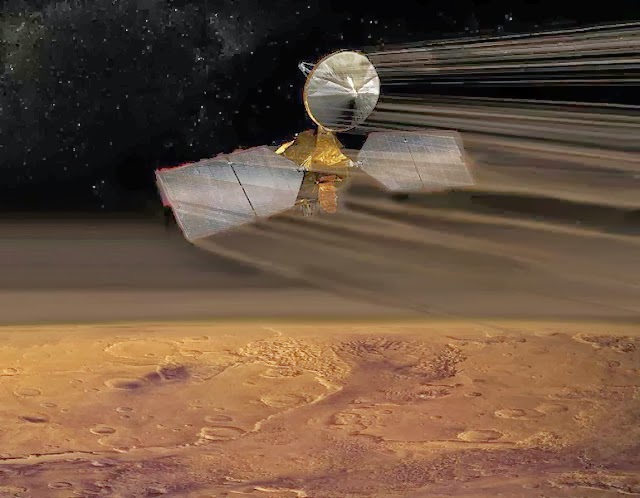

Pros: Low fuel consumption.
Cons: We need accurate calculations so as not to “miss” past Mars.
2. Atmospheric deceleration. Entry into the atmosphere at a speed of about 6 km / s.
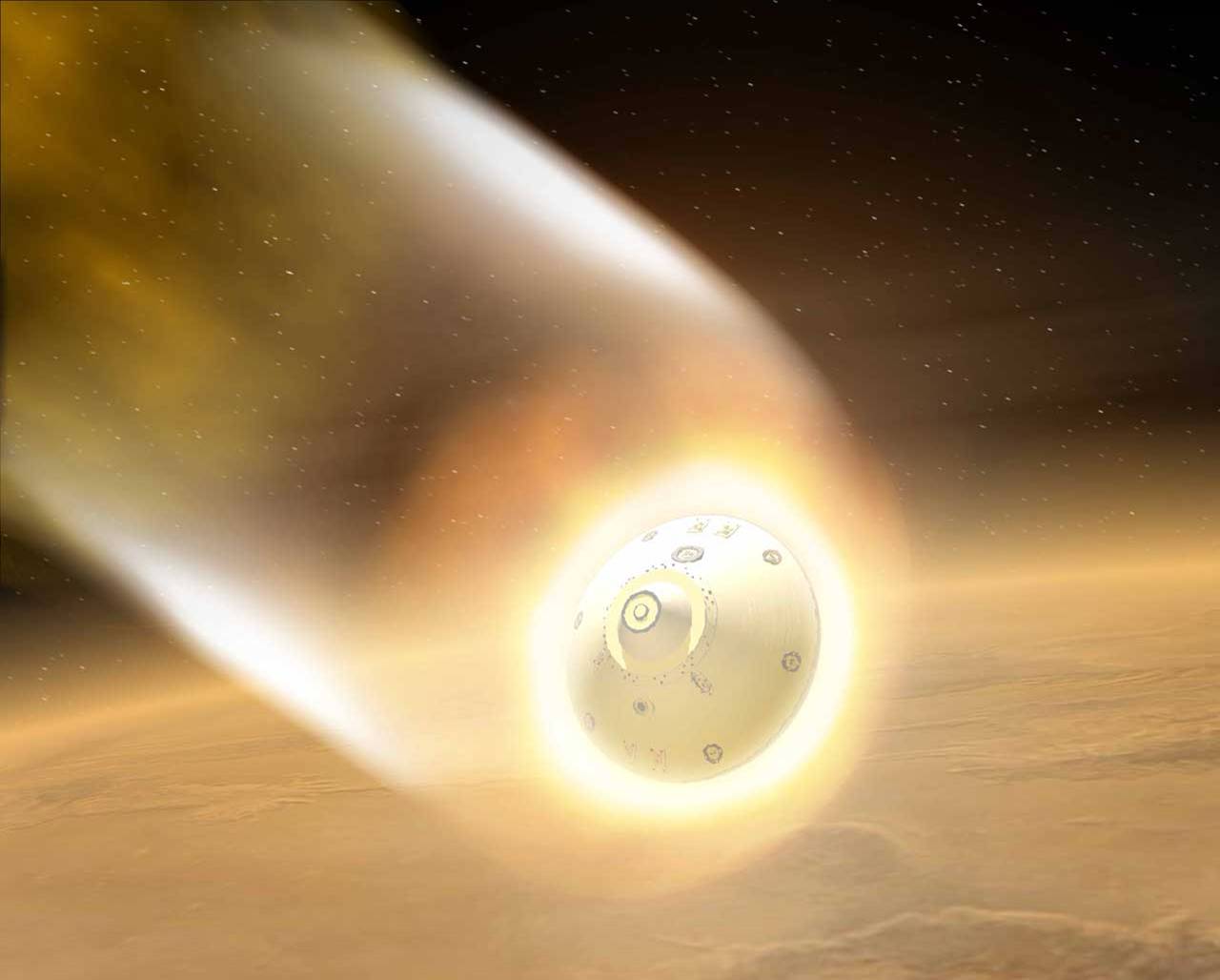
Pros: The lowest cost of fuel, calculations for the flight is easier than for ballistic capture.
Cons: Thermal protection is required, able to withstand entry into the atmosphere of Mars at a speed of about 6 km / s.
3. Going into orbit using its own propulsion system.
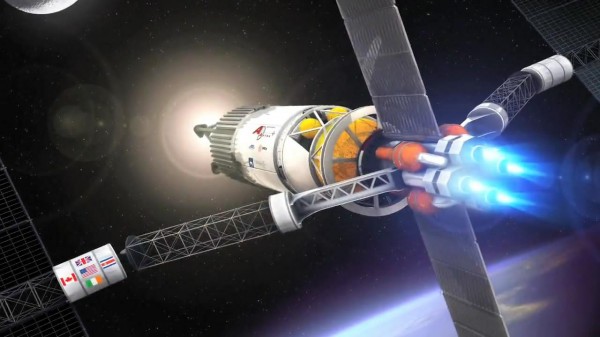
Pros: Calculations are much easier than for ballistic capture and atmospheric braking.
Cons: Great fuel costs.
The second method will be optimal for a cargo ship. For the manned one, the third (in the case of an effective ionic engine) is best suited, or the first one with its absence / fuel economy.
3. Radiation
Moon : You can fly "out the window" when the Sun is the least active, and nothing threatens the health of astronauts. On the surface of the moon, radiation is no different from cosmic radiation. the moon has no magnetic field.
Mars : It is impossible to get "out of the window" because of the long duration of the flight. The project Mars One is proposed to protect astronauts with water . The density of protection will be 40 g / cm2 for the “shelter” in case of a solar flare and 15 g / cm2 for the rest of the ship. Radiation protection increases the mass of the ship several times. According to the RAD instrument, the Curiosity rover for 180 days in open space (the Moon has neither the atmosphere nor its own magnetic field) is equivalent to 500 days on the surface.
4. Landing
Moon : The landing stage will weigh 60% of the payload. Aerodynamic braking is impossible because the moon has no atmosphere.
Mars : All Martian missions used aerodynamic drag. Curiosity braked to 410 m / s using a heat shield, and then to 100 m / s using a parachute. After that, he lowered the "sky crane." If you do not use a parachute, then about 500-600 m / s dV will be needed for landing after aerodynamic braking. Therefore, the mass of the landing stage will be approximately 30% of the mass of the payload (taking into account the heat shield).
5. Take off
Moon : The mass of the payload when entering the moon's orbit will be 40%.
Mars : The mass of the payload at the exit into the orbit of Mars will be approximately 25%. Although there is a project on the use of imported hydrogen and CO2 from the atmosphere (and there are 95% of it) for the production of methane (CH4) and its further use in the takeoff stage, which will reduce the mass of fuel delivered for takeoff to 7%.
Everything is clear here: the 1st cosmic velocity for the Moon is 1.68 km / s, and for Mars it is 3.55 km / s.
6. Minimum length of stay
Luna : You can fly away immediately after landing / entering the satellite orbit. You can not even go into orbit, as had to be done during the Apollo 13 mission.
Mars : After entering orbit, you need to wait about 17 months for the planets to line up in a position favorable for flight. You can fly earlier, crossing the orbit of Venus. But it requires high energy costs.
7. Gravity
The residence time of people on the moon was very small, and therefore it was not possible to estimate the effect of low gravity on humans.
Record of stay at the orbital station - 437 days .
Accordingly, in 145-260 days of flight to Mars with astronauts, nothing detrimental due to the absence of gravity will occur.
It is not known how it will be more convenient for an astronaut to navigate around Mars: jump like a kangaroo or walk.
Moon : 16.5% of the gravitational force of the Earth.
Mars : 37.8% of the gravitational force of the Earth.
8. Environmental conditions
Moon : Moon dust is abrasive. It can disable the mechanisms; internal microbloods in the lungs are possible from it. It is impossible to grow anything on the lunar soil, but it is possible to extract metals from it and then build structures from them.
The temperature on the moon ranges from -180 to 120 degrees.

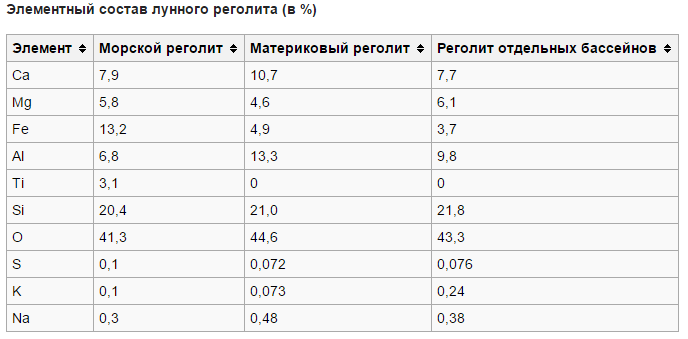
Mars : Martian dust is not as abrasive as Moonlight. The atmosphere of Mars is "weaker" than the atmosphere of the Earth 110-150 times depending on the season. The exact composition of the Martian soil is unknown, so I cannot comment on the possibility of extracting anything from it except water. In 2018, SpaceX planned to send a mission to take samples of Martian soil and deliver them to Earth, but then this mission was postponed to 2022. The temperature on Mars ranges from -140 to 20 degrees. In terms of temperature, Mars is more favorable than the Moon.
On the Martian soil can grow plants. Read more about it here and here .

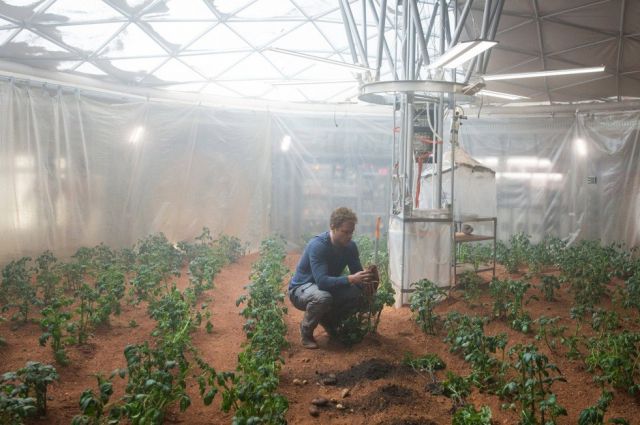
9. Water
Moon : On the moon, it is proved that there is approximately 600,000,000 m3 of ice at the North Pole.
Mars : If all the ice on Mars melted, the planet could be covered with water at 22 meters. But in reality this will not happen. the atmosphere is too weak to hold water in a liquid state.
More details about water on Mars wrote Green Cat here and here .
10. Solar energy
Moon : The power of solar radiation on the moon is about 1400 W / m2. The efficiency of solar panels is 20-40%, this will allow to get to receive 280-560 W / m2 of electricity. But the problem is that the moon makes 1 revolution in 28 days, i.e. there are 14 days a day and 14 days a night. Therefore, the Moon will have to deliver a lot of batteries to maintain the station for 2 weeks.
Mars : Mars is farther from the Sun than the Earth and the Moon. The power of solar radiation is about 600 W / m2. Solar panels will produce 120-240 W / m2. Mars makes 1 turn in 24 hours and 40 minutes.
Plans for flights to Mars are at NASA, on the moon - at Roskosmos. But everyone can get ahead of SpaceX. Ilon Musk is going to organize a flight to Mars in 2025.

1. Flight duration
')
Moon : 3 days.
Mars : about 250 days along the Gomanov trajectory, about 145 days along the " Fast trajectory ". (It needs extra 400 m / s dV). In the case of "miss" by Mars or those. Fault can be returned to Earth in about the same 145 days, circled Mars.
2. The energy cost of the flight
Moon : about 3000 m / s to go to the trajectory of the flight to the Moon with a CRO + 800 m / s for braking and entering the Moon orbit.
Mars : approximately 3600 m / s to go to the flight trajectory to Mars (4000 m / s for the Fast trajectory ). After the flight to Mars, there are 3 options:
1. Ballistic capture : The spacecraft flies in front of the planet, but at a speed lower than that of the planet. Then the planet “crawls” onto the spacecraft, and captures it into its orbit. Then you can brake on the atmosphere, as did the MRO :


Pros: Low fuel consumption.
Cons: We need accurate calculations so as not to “miss” past Mars.
2. Atmospheric deceleration. Entry into the atmosphere at a speed of about 6 km / s.

Pros: The lowest cost of fuel, calculations for the flight is easier than for ballistic capture.
Cons: Thermal protection is required, able to withstand entry into the atmosphere of Mars at a speed of about 6 km / s.
3. Going into orbit using its own propulsion system.

Pros: Calculations are much easier than for ballistic capture and atmospheric braking.
Cons: Great fuel costs.
The second method will be optimal for a cargo ship. For the manned one, the third (in the case of an effective ionic engine) is best suited, or the first one with its absence / fuel economy.
3. Radiation
Moon : You can fly "out the window" when the Sun is the least active, and nothing threatens the health of astronauts. On the surface of the moon, radiation is no different from cosmic radiation. the moon has no magnetic field.
Mars : It is impossible to get "out of the window" because of the long duration of the flight. The project Mars One is proposed to protect astronauts with water . The density of protection will be 40 g / cm2 for the “shelter” in case of a solar flare and 15 g / cm2 for the rest of the ship. Radiation protection increases the mass of the ship several times. According to the RAD instrument, the Curiosity rover for 180 days in open space (the Moon has neither the atmosphere nor its own magnetic field) is equivalent to 500 days on the surface.
4. Landing
Moon : The landing stage will weigh 60% of the payload. Aerodynamic braking is impossible because the moon has no atmosphere.
Mars : All Martian missions used aerodynamic drag. Curiosity braked to 410 m / s using a heat shield, and then to 100 m / s using a parachute. After that, he lowered the "sky crane." If you do not use a parachute, then about 500-600 m / s dV will be needed for landing after aerodynamic braking. Therefore, the mass of the landing stage will be approximately 30% of the mass of the payload (taking into account the heat shield).
5. Take off
Moon : The mass of the payload when entering the moon's orbit will be 40%.
Mars : The mass of the payload at the exit into the orbit of Mars will be approximately 25%. Although there is a project on the use of imported hydrogen and CO2 from the atmosphere (and there are 95% of it) for the production of methane (CH4) and its further use in the takeoff stage, which will reduce the mass of fuel delivered for takeoff to 7%.
Everything is clear here: the 1st cosmic velocity for the Moon is 1.68 km / s, and for Mars it is 3.55 km / s.
6. Minimum length of stay
Luna : You can fly away immediately after landing / entering the satellite orbit. You can not even go into orbit, as had to be done during the Apollo 13 mission.
Mars : After entering orbit, you need to wait about 17 months for the planets to line up in a position favorable for flight. You can fly earlier, crossing the orbit of Venus. But it requires high energy costs.
7. Gravity
The residence time of people on the moon was very small, and therefore it was not possible to estimate the effect of low gravity on humans.
Record of stay at the orbital station - 437 days .
Accordingly, in 145-260 days of flight to Mars with astronauts, nothing detrimental due to the absence of gravity will occur.
It is not known how it will be more convenient for an astronaut to navigate around Mars: jump like a kangaroo or walk.
Moon : 16.5% of the gravitational force of the Earth.
Mars : 37.8% of the gravitational force of the Earth.
8. Environmental conditions
Moon : Moon dust is abrasive. It can disable the mechanisms; internal microbloods in the lungs are possible from it. It is impossible to grow anything on the lunar soil, but it is possible to extract metals from it and then build structures from them.
The temperature on the moon ranges from -180 to 120 degrees.


Mars : Martian dust is not as abrasive as Moonlight. The atmosphere of Mars is "weaker" than the atmosphere of the Earth 110-150 times depending on the season. The exact composition of the Martian soil is unknown, so I cannot comment on the possibility of extracting anything from it except water. In 2018, SpaceX planned to send a mission to take samples of Martian soil and deliver them to Earth, but then this mission was postponed to 2022. The temperature on Mars ranges from -140 to 20 degrees. In terms of temperature, Mars is more favorable than the Moon.
On the Martian soil can grow plants. Read more about it here and here .


9. Water
Moon : On the moon, it is proved that there is approximately 600,000,000 m3 of ice at the North Pole.
Mars : If all the ice on Mars melted, the planet could be covered with water at 22 meters. But in reality this will not happen. the atmosphere is too weak to hold water in a liquid state.
More details about water on Mars wrote Green Cat here and here .
10. Solar energy
Moon : The power of solar radiation on the moon is about 1400 W / m2. The efficiency of solar panels is 20-40%, this will allow to get to receive 280-560 W / m2 of electricity. But the problem is that the moon makes 1 revolution in 28 days, i.e. there are 14 days a day and 14 days a night. Therefore, the Moon will have to deliver a lot of batteries to maintain the station for 2 weeks.
Mars : Mars is farther from the Sun than the Earth and the Moon. The power of solar radiation is about 600 W / m2. Solar panels will produce 120-240 W / m2. Mars makes 1 turn in 24 hours and 40 minutes.
Plans for flights to Mars are at NASA, on the moon - at Roskosmos. But everyone can get ahead of SpaceX. Ilon Musk is going to organize a flight to Mars in 2025.
Source: https://habr.com/ru/post/389973/
All Articles